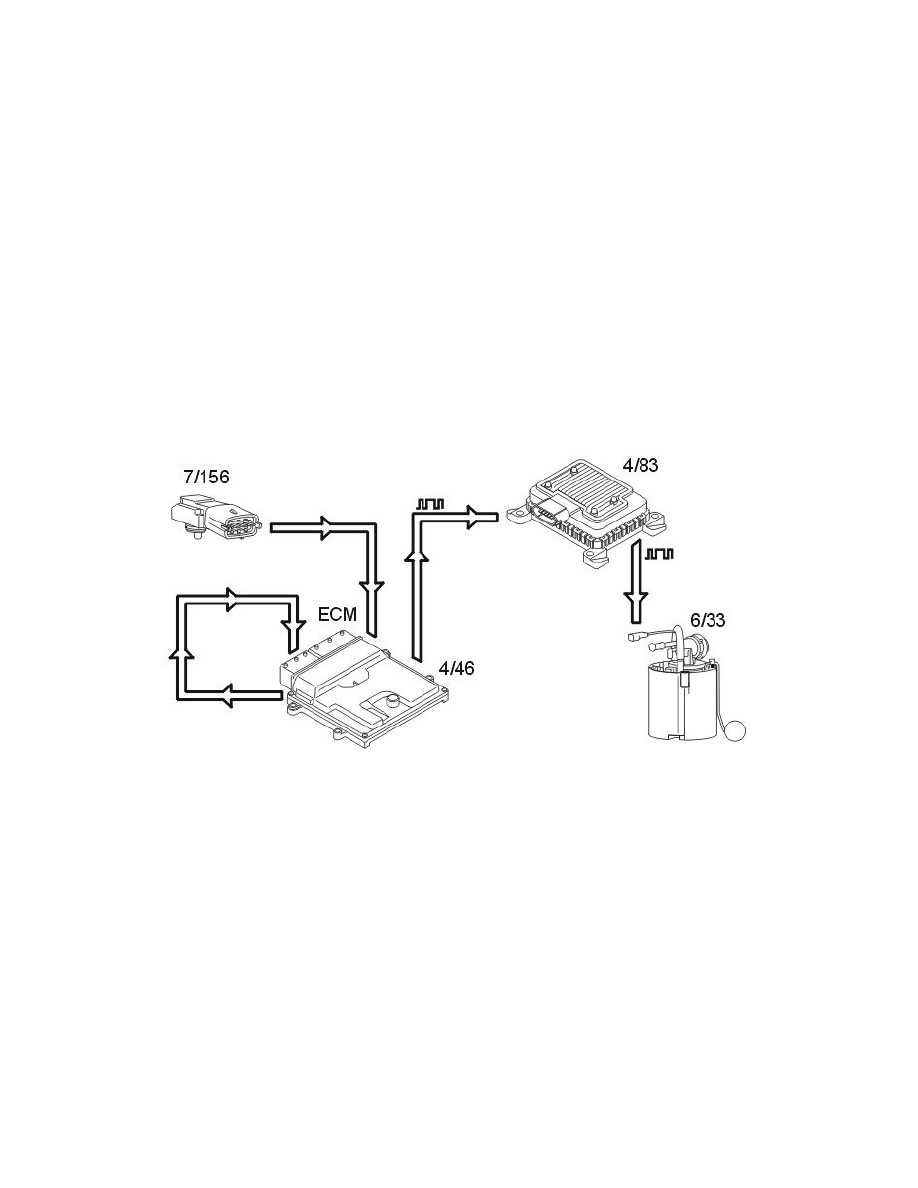XC90 FWD L6-3.2L VIN 98 B6324S (2007)

(+10%) and 1.20 (+20%), although still at an amplitude of 5%, but with an offset in relation to the original center line (A). The injection period has then
been increased to compensate the increase in the amount of air.
The adaptive functions will correct the change, so that the short-term fuel trim will work around the new center line (B) where it will again have its full
range of control available.
Put simply, fuel trim is a measurement of the difference (C) between the original short-term fuel trim center line (A) and the new center line (B).
The adaptive functions are split into various operational ranges based on the load and speed of the engine.
The different adaptation ranges can be read off.
The adaptive adjustments of injection time are continuously stored in the engine control module (ECM). This means that, at different operating ratios,
the correct mixture ratio is achieved before the heated oxygen sensor (HO2S) reaches operating temperature.
The diagnostic trouble code (DTC) is stored in the engine control module (ECM) if any adaptation value is too high or too low.
Individual cylinder fuel trim
General
The Engine control module (ECM) controls the fuel according to the description in Fuel trim above, but has another refined system for improving
exhaust values, namely individual cylinder fuel trim.
In short, this means that the Engine control module (ECM) can detect the fuel/air mixture composition for each individual (6 cylinders).
To achieve this requires, among others, refined heated oxygen sensors that are very sensitive to the oxygen content in the exhausts.
Should problems occur, which would mean that the sensors, "lose" their extra sensitivity, the Engine control module (ECM) will return to traditional fuel
trim.
This will not force the vehicle outside any limit values for exhausts, since this is more than enough to give "clean" exhausts.
Fuel pressure regulation
General
Fuel pressure regulation for demand controlled fuel pumps (DECOS - DEmand COntrolled fuel Supply) means that the fuel pressure is controlled
steplessly by varying the output of the fuel pump. The design of the system allows a greater maximum pressure (approximately 650kPa) in the fuel pump.
This pressure is used in extreme situations, such as heavy engine load for example
The following components are used for fuel pressure regulation:
-
engine control module (ECM) (4/46) with integrated atmospheric pressure sensor
-
fuel pump control module (4/83)
-
fuel pressure sensor with fuel temperature sensor (7/156)
-
fuel pump with by-pass valve (6/33).
The time taken for the engine start procedure can be reduced by rapidly increasing the pressure in the fuel rail when the engine control module (ECM)
receives a signal about the position of the ignition switch from the central electronic module (CEM).
The engine control module (ECM) is better able to calculate the injection period using the signal from the atmospheric pressure sensor and fuel pressure
sensor. This particularly improves the cold starting characteristics of the engine.
The advantages of varying the output of the fuel pump so that it is not always at full power are:
-
the total power consumption of the fuel pump (FP) is reduced, reducing the load on the power supply system
-
the service life of the fuel pump (FP) is increased
-
fuel pump noise is reduced.
Control
